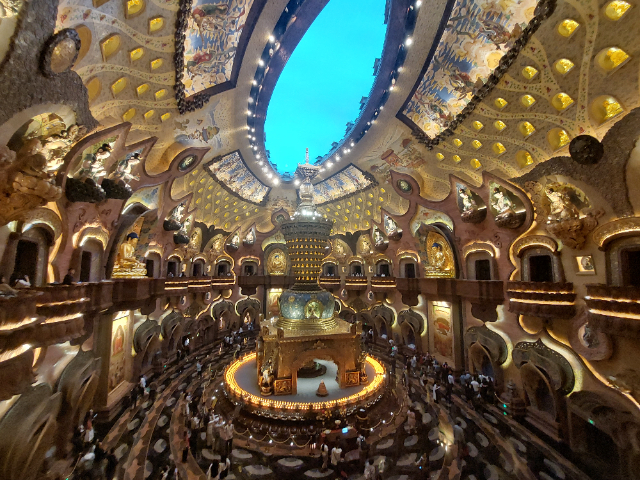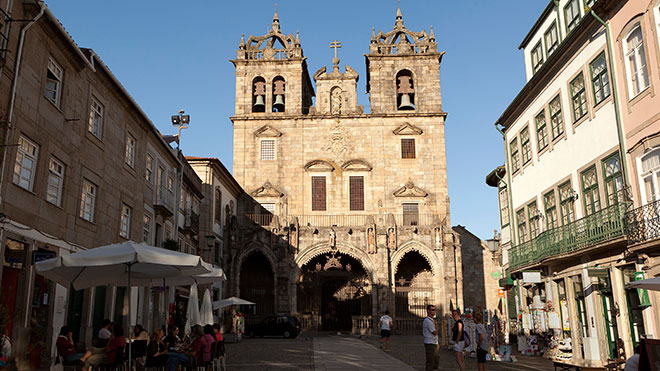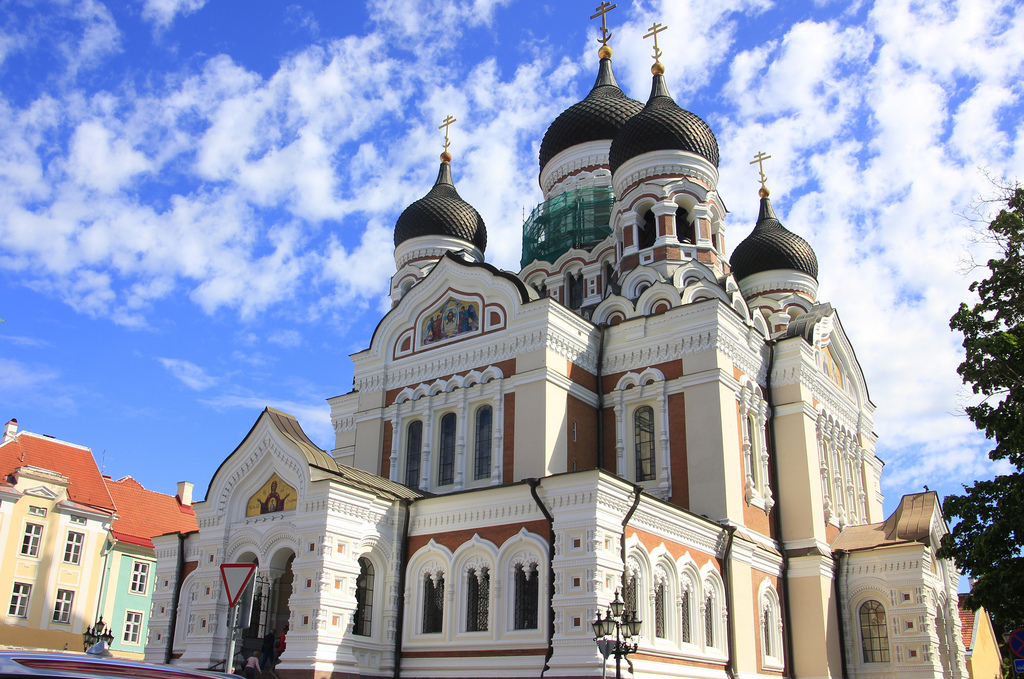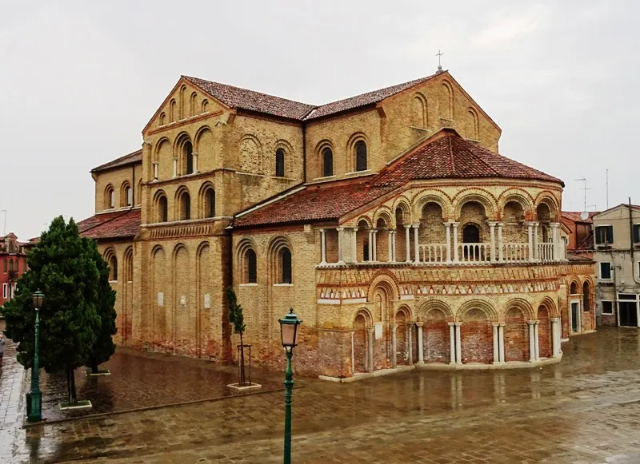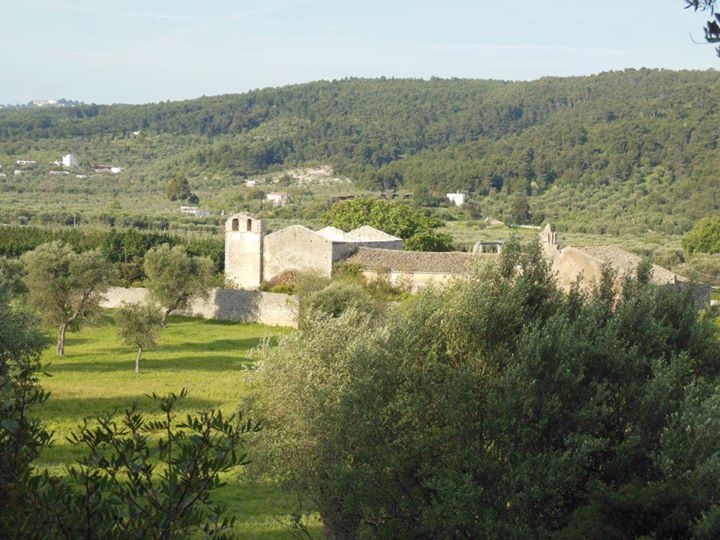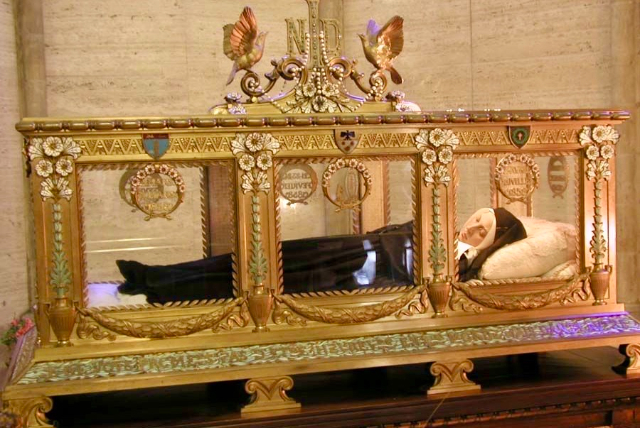The Abbey of Farfa is one of the most distinguished monuments of the European Middle Ages; it had the patronage of Charlemagne and owned, in its heyday, a very large portion of Central Italy. The origin of the Abbey is still uncertain, although the most recent archaeological excavations led by Prof. David Whitehouse, director of the British school in Rome, have ascertained the existence of a complex from the Roman period beneath the present Abbey. The almost certain identification of Lorenzo Siro with the bishop of Forum Novum (Vescovio) in 554 would ascertain the creation in the 5th century of a fervent center of faith and wealth. At the time of the Lombard invasion there was a basilica and some monastic buildings. According to one legend, in the last two decades of the 7th century, Thomas of Moriana (or Morienna), who was living in Jerusalem, following a vision of Our Lady, urged to search in Sabina, in a said Acutian, for the remains of a basilica dedicated to her, rebuilt the work built by Bishop Syrus and gave rise to a re-foundation of the community. In the early 8th century the monastery enjoyed the protection of the Duke of Spoleto Faroaldo II.
Farfa was thus an Imperial Abbey, freed from papal control but very close to the Holy See. In a few decades it became one of the best known and most prestigious centers of medieval Europe; Charlemagne himself, a few weeks before being crowned on the Capitol, visited the Abbey and stayed there.
In 999 the reform born in Cluny was introduced. With Berard I (1047 – 1089) Farfa reassumed the characteristics of an imperial Abbey and in the struggle for investiture it sided against the Popes and in favor of Henry IV with the consequence that, in 1097, the monks decided, for security reasons, to move the abbey complex to the overhanging Acutian mountain, where the imposing ruins of the work begun and never finished are still visible today.
The final decline would begin, however, shortly thereafter: the Concordat of Worms (1122) marked, in fact, the passage of the monastery to papal authority; with Abbot Adenulf (1125) total subjection was officially sanctioned.
In 1798 Farfa suffered looting by the French and in 1861 confiscation by the Italian state. Since 1921 the Abbey has belonged to the Benedictine community of St. Paul Outside the Walls.
Through a Romanesque portal from the 14th century (with Gothic additions) one enters a courtyard against the backdrop of which opens the Abbey Church consecrated to the Virgin, dating from the second half of the 15th century. Note above the Romanesque portal, in the lunette, a 15th-century fresco.
Fragments of early Christian sarcophagi can be discerned in the church walls. The interior of the la basilica has three naves divided by two rows of elegant Ionic columns, on the back wall a large oil on wall depicting the Last Judgment painted in 1561 by Flemish painter Henrik van der Broek. Frescoes from the 16th and 17th centuries depicting Stories of the Virgin, Saints and Biblical Stories decorate the apse and the smaller naves; of note in the first chapel on the right is a Crucifixion (copy by Francesco Trevisani), in the second a Madonna and Child with Two Angels known as the Madonna of Farfa, a venerated 13th-century panel, covered (in the 19th century) with an embossed brass foil that leaves only the faces visible. Near the door of the basilica, in the transept and apse, interesting remains have come to light: an altar from the Carolingian period and a section of wall frescoed with an image of an abbot (the so-called Arcosollo di Altperto) that Prof. Whitehouse, carefully reading the surviving tract of writing, recently identified as St. Lawrence Siro. In the three chapels of the left aisle, Orazio Gentileschi and his pupils worked. By the master are in fact the three canvases depicting St. Ursula (I chapel), Madonna and Child (Il capp.), Crucifixion of St. Peter (III chap.), by his pupils the frescoes decorating the interior of the chapels and depicting episodes of sacred history. In the transept, the original floor from the first half of the 9th century is partly visible. In the left chapel of the transept stand out the severe images of the founders of the Abbey of Farfa: St. Thomas of Morienna and St. Lawrence Siro. In the transept ceiling and choir, the unusual (for a sacred place) grotesques of the Zuccari school should be carefully observed. The wooden choir in the apse is from the early 17th century. Before leaving the church, looking up, one can admire the coffered ceiling from 1494 with the Orsini coat of arms in a panel in the center of the nave. Also worth visiting are the semianular-shaped crypt from the 7th-8th centuries, in the atrium of which is a beautiful Roman sarcophagus (late 2nd century A.D.) with a battle scene between Romans and Barbarians, and the Bell Tower (9th-13th centuries); at the base of the latter, in a square chamber, one can see, although perished, very interesting frescoes of the Roman school from the mid-11th century, representing Biblical Stories and the Ascension. Going up to the upper rooms, in one of them, frescoed in a sottareo, are some Prophets painted in the 15th century.
The visit to the Abbey can be completed by asking to be accompanied to the Longobard Cloister (with a Romanesque mullioned window from the 13th cent.). and the Great Cloister dating from the second half of the 17th century, where Roman sculptures and epigraphs are collected; from here, through a diamond-tipped portal one passes into the present library equipped with more than 45,000 volumes, where some valuable codices are located.


